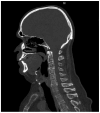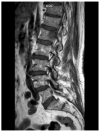Role of Imaging in Multiple Myeloma: A Potential Opportunity for Quantitative Imaging and Radiomics?
- PMID: 39682285
- PMCID: PMC11640347
- DOI: 10.3390/cancers16234099
Role of Imaging in Multiple Myeloma: A Potential Opportunity for Quantitative Imaging and Radiomics?
Abstract
Multiple myeloma (MM) is the second most prevalent hematologic malignancy, particularly affecting the elderly. The disease often begins with a premalignant phase known as monoclonal gammopathy of undetermined significance (MGUS), solitary plasmacytoma (SP) and smoldering multiple myeloma (SMM). Multiple imaging modalities are employed throughout the disease continuum to assess bone lesions, prevent complications, detect intra- and extramedullary disease, and evaluate the risk of neurological complications. The implementation of advanced imaging analysis techniques, including artificial intelligence (AI) and radiomics, holds great promise for enhancing our understanding of MM. The integration of advanced image analysis techniques which extract features from magnetic resonance imaging (MRI), computed tomography (CT), or positron emission tomography (PET) images has the potential to enhance the diagnostic accuracy for MM. This innovative approach may lead to the identification of imaging biomarkers that can predict disease prognosis and treatment outcomes. Further research and standardized evaluations are needed to define the role of radiomics in everyday clinical practice for patients with MM.
Keywords: artificial intelligence; imaging; multiple myeloma; prognosis; radiomics.
Conflict of interest statement
The authors declare no conflict of interest.
Figures





References
-
- Rajkumar S.V., Dimopoulos M.A., Palumbo A., Blade J., Merlini G., Mateos M.-V., Kumar S., Hillengass J., Kastritis E., Richardson P., et al. International Myeloma Working Group updated criteria for the diagnosis of multiple myeloma. Lancet Oncol. 2014;15:e538–e548. doi: 10.1016/S1470-2045(14)70442-5. - DOI - PubMed
Publication types
LinkOut - more resources
Full Text Sources

